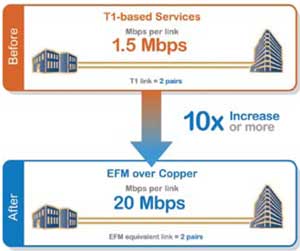 An increasing number of wireless data users are getting some tough love courtesy of AT&T.
An increasing number of wireless data users are getting some tough love courtesy of AT&T.
“Your data use this month places you in the top 5% of users,” the text message reads. “Use Wi-Fi to avoid reduced speeds.” Our regular reader Earl hopes we’ll keep spreading the word.
AT&T’s speed throttle has now moved beyond the pages of tech blogs and into USA Today, where the newspaper explores the trials and tribulations of wireless data management policies at the nation’s largest wireless companies.
Mike Trang, along with at least 200,000 other AT&T customers, has been caught in AT&T’s wireless speed trap. The result can be speeds punitively reduced to dial-up for the remainder of a billing cycle, leaving customers on AT&T’s “unlimited use” plan waiting up to two minutes for a single web page to load.
While AT&T tells the newspaper it only throttles the speeds of unlimited customers who use an average of 2GB or more per month to ease congestion (if that), the company’s “congestion problems” seem to disappear when customers switch to a usage-billing plan that charges fees based on different usage allowances:
Trang’s iPhone was throttled just two weeks into his billing cycle, after he’d consumed 2.3 gigabytes of data. He pays $30 per month for “unlimited” data. Meanwhile, Dallas-based AT&T now sells a limited, or “tiered,” plan that provides 3 gigabytes of data for the same price.
Users report that if they call the company to ask or complain about the throttling, AT&T customer support representatives suggest they switch to the limited plan.
“They’re coaxing you toward the tiered plan,” said Gregory Tallman in Hopatcong, N.J. He hasn’t had his iPhone 4S throttled yet, but he’s gotten text-messages from AT&T, warning that he’s approaching the limit. This came after he had used just 1.5 gigabytes of data in that billing cycle.
 Many customers who have received the text message warning about their usage now think twice about everything they do with their phone, which may be part of what AT&T intended for its remaining customers grandfathered on a now-discontinued unlimited use plan.
Many customers who have received the text message warning about their usage now think twice about everything they do with their phone, which may be part of what AT&T intended for its remaining customers grandfathered on a now-discontinued unlimited use plan.
John Cozen, a Web and mobile applications designer in San Diego, told USA Today he’s now “almost scared to use the phone.”
Cozen’s complaints to AT&T have been ignored and now he’s shopping for a new carrier.
AT&T’s warning-and-throttle system is the strictest among America’s largest wireless carriers. When customers exceed AT&T’s arbitrary declaration of being among the “top 5% of users,” their speeds are subject to severe slowdowns until their next bill is issued. This leaves customers who may have needed their phone at the beginning of the month for a business trip or vacation suddenly throttled for weeks because of what AT&T calls “congestion,” even if nobody else is using the cell tower. Even worse, customers not yet deemed to be offending AT&Ts usage manners, or who pay per gigabyte, can overload a cell tower and create the very congestion AT&T claims it hopes to manage. But only “unlimited use” customers get “time out” in the usage penalty corner.
Among other carriers:
- Verizon Wireless also uses a network management system that can throttle speeds for exceptionally heavy users, but their speed throttle is engaged only when individual cell towers are overloaded with traffic, and the speed reduction level will vary with the amount of traffic on that tower. When congestion eases, speeds return to normal for everyone;
- T-Mobile throttles customers after a maximum of 5GB of usage per month, unless other arrangements are made with the company;
- Sprint Nextel does not have usage limits or a throttle on smartphone data plans at this time.


 Subscribe
Subscribe






